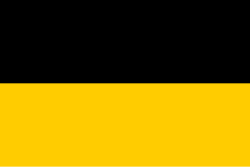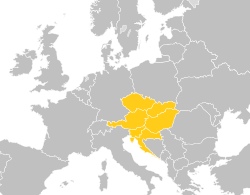The topic of this article may not meet Wikipedia's notability guidelines for companies and organizations .(December 2021) |
You can help expand this article with text translated from the corresponding article in Polish. (07 2024)Click [show] for important translation instructions.
|
Black-Yellow Alliance Die Monarchisten – Schwarz-Gelbe Allianz | |
|---|---|
 | |
| Abbreviation | SGA |
| President | Nicole Fara |
| Vice President | Günther Kenyeri |
| Founded | 6 August 2004 |
| Headquarters | Hermesstraße 70 1130 Vienna |
| Newspaper | Corona ~ Nachrichten für Monarchisten |
| Student wing | Black Yellow students |
| Ideology | Monarchism Legitimism Conservatism Reactionism Christian Democracy Soft Euroscepticism |
| Political position | Center-right to right-wing |
| Colours | Black, Yellow |
| Federal Council (Bundesrat) | 0 / 60 |
| National Council (Nationalrat) | 0 / 183 |
| Website | |
| sga | |


The Black-Yellow Alliance (German : Schwarz-Gelbe Allianz, SGA) is a monarchist movement in Austria founded on 6 August 2004. Its aim is the restoration of the monarchy in Austria with the House of Habsburg-Lorraine. They also advocate for a Central European monarchic union of the states which have emerged after the dissolution of Austria-Hungary.